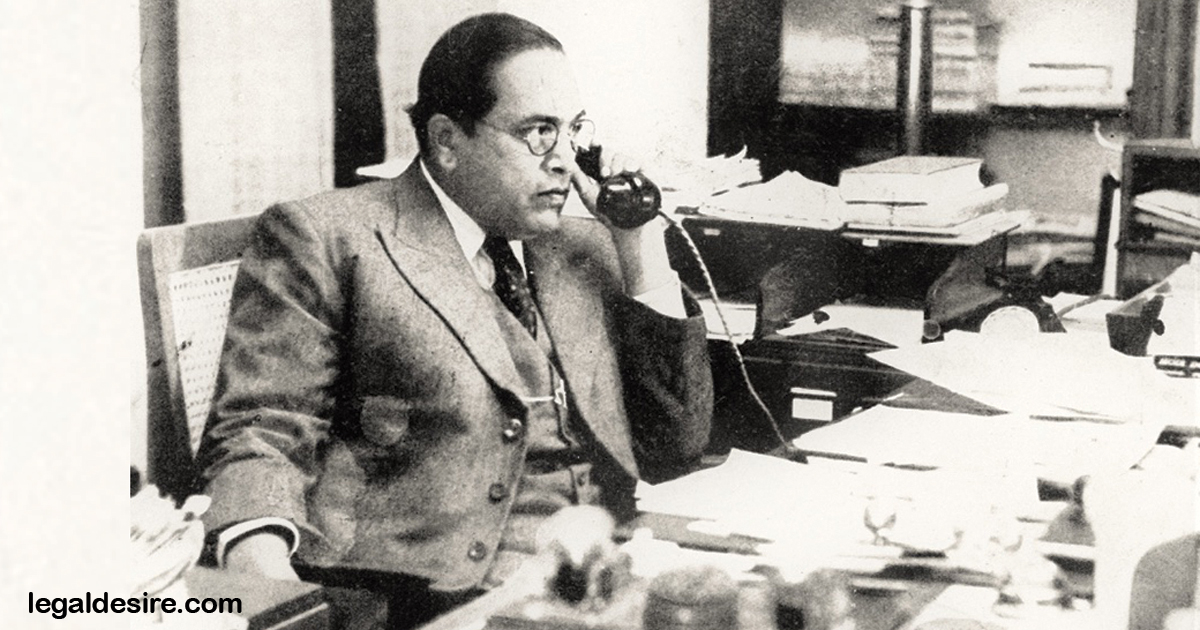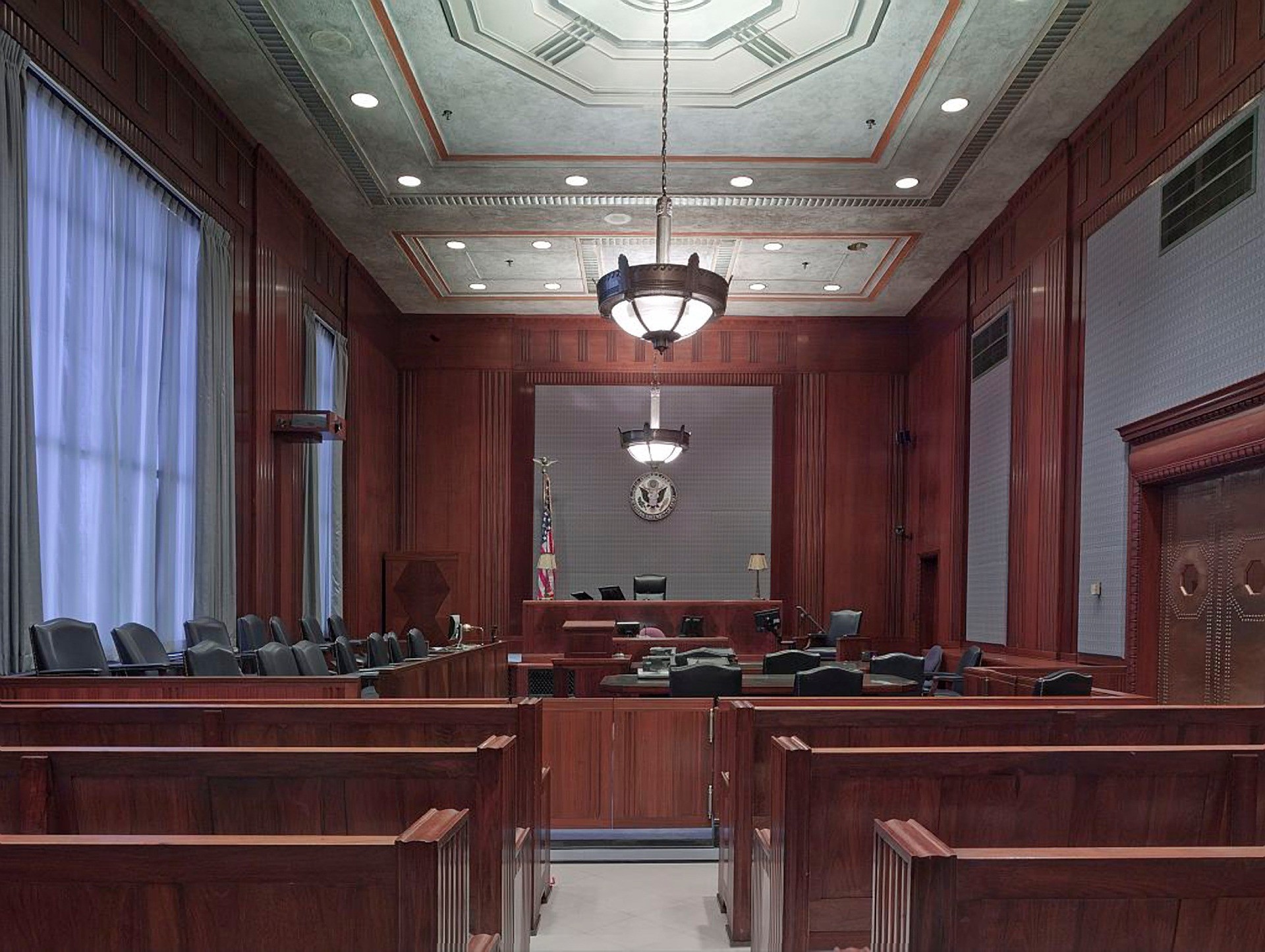Now Reading: 26 Interesting Facts About Dr. B.R. Ambedkar
-
01
26 Interesting Facts About Dr. B.R. Ambedkar

26 Interesting Facts About Dr. B.R. Ambedkar
Bhiva Ramji Ambedkar also known as Bhimrao Ramji Ambedkar, Babasaheb Ambedkar & B.R. Ambedkar was an Indian jurist, economist, politician and social reformer born on 14th April 1891 to Ramji Maloji Sakpal and Bhimbai Ramji Sakpal.
He inspired the Dalit Buddhist movement and campaigned against social discrimination towards the untouchables that is the Dalits, while also supporting the rights of women and labour. B.R. Ambedkar was independent India’s first law and justice minister, the principal architect of the Constitution of India, and a founding father of the Republic of India.
Ambedkar was a creative student earning Doctorates in Economics from both Columbia University and the London School of Economics and attained a reputation as a scholar for his exploration in Law, Economics, and Political Science. In his initial career he was an economist, professor, and lawyer. Ambedkar’s later life was notable by his political exercise; he became embroiled in campaigning for India’s Independence, publishing journals, justify political rights and social freedom for Dalits, and devoting significantly to the formation of India. Later in 1956, Ambedkar converted to Buddhism inducting mass conversions of Dalits to the same.
He died on 6th December 1956 due to illness. In 1990, India’s highest civilian award the Bharat Ratna was posthumously conferred upon B.R. Ambedkar for his contributions to the country.
INTERESTING FACTS
There are some interesting facts regarding Ambedkar. Some of them are as follows:
- Ambedkar was born into a poor low Mahar, (dalit) caste in the town and military cantonment of Mhow in the Central Provinces (now in Madhya Pradesh). Ambedkar was the last child (14th) of Ramji Maloji Sakpal and Bhimabai Murbadkar Sankpal. He and his family was of Marathi background from the town of Ambavade (Mandangad taluka) in Ratnagiri district (modern-day Maharashtra). His family belonged to the Mahar caste, who were treated as untouchables and was subjected to socio-economic discrimination. Ambedkar’s ancestors had long been in the employment of the army of the British East India Company, and his father served in the British Indian Army at the Mhow cantonment.
- Although able to attend school, Ambedkar and other untouchable children were segregated and given little attention or assistance by the teachers. They were not allowed to attend inside the class. If the untouchables needed to drink water, someone from the higher caste would have to pour water from a height as they were refrained to touch either the water or the vessel that contains water. This was usually performed for the young Ambedkar by the school peon, and if the peon was not available then he had to go without water; the situation he later in his writings described as “No peon, No Water”. He was to sit on a gunny sack which he had to take home with him everytime.
- Among his brothers and sisters, only Ambedkar succeeded in passing his examinations and graduating to a high school. His authentic surname Ambavadekar is derived from his native village ‘Ambavade’. Mahadev Ambedkar his Brahmin teacher, who was fond of Ambedkar, changed his surname from ‘Ambavadekar’ to his own surname ‘Ambedkar’ in school records.
- In the year 1897, his family moved to Bombay where Ambedkar became the only untouchable enrolled and attended at Elphinstone High School.
- In 1913, he moved to the United States as he had been awarded a Baroda State Scholarship of £11.50 (Sterling) per month for three years under a scheme established by the Gaekwar of Baroda to provide opportunities for postgraduate education at the Columbia University in New York City. Soon after arriving there he settled in the rooms at Livingston Hall with Naval Bhathena, a Parsi who was to be Ambedkar’s lifelong friend. He passed his M.A. majoring in Economics, with Sociology, History, Philosophy and Anthropology as other subjects of study in June, 1915; he presented a thesis, Ancient Indian Commerce. B.R. Ambedkar was the first Indian to pursue a doctorate in economics from foreign university.
- In 1916 he completed his second thesis, National Dividend of India-A Historic and Analytical Study and finally he received his PhD in Economics in 1927 for his third thesis, after he left for London.
- In 1923 he took his D.Sc.in Economics, and the same year he was called to the Bar by Gray’s Inn. His 3rd and 4th Doctorates that is in (Ll.D, Columbia, 1952 and Ll.D., Osmania, 1953) were conferred upon him honoris causa. Incidentally, in 1917 he travelled separately from his collection of books, which were lost when the ship that the collection on which they were dispatched was torpedoed and sunk by a German submarine.
- Ambedkar was bound to serve the Princely State of Baroda as he was educated by the Princely State of Baroda. Ambedkar in turn was appointed as the Military Secretary to the Gaikwad but he had to quit within a short period of time. He described the incident in his autobiography called “Waiting for a Visa”. After quitting, he tried to find ways to make a living for his growing family. Ambedkar worked as a private tutor, as an accountant, and in turn established an investment consulting business. It failed when his clients found that he was an untouchable. In 1918 he became a Professor of Political Economy in the Sydenham College of Commerce and Economics in Bombay. Even though he was successful with the students of the institution, other professors objected to his sharing the same drinking-water jug that they all used.
- Ambedkar had been invited to testify before the Southborough Committee, which was preparing the Government of India Act of 1919. Before the committee, Ambedkar argued for creating separate electorates and reservations for untouchables and other religious communities.
- While practicing law in the Bombay High Court, he tried to uplift the untouchables in order to educate them. He firstly organised an attempt to achieve this by forming the Bahishkrit Hitakarini Sabha, which was designed to promote education and socio-economic improvement, as well as the welfare of “outcastes”, also referred as the depressed classes. To protect the Dalits and protection of such rights he started many periodicals like Mook Nayak, Bahishkrit Bharat, and Equality Janta.
- The Mahad Satyagraha of 1927 was one of the defining moments in Ambedkar’s political thought and action. It was held in the small town of Mahad in Maharashtra. The Mahad Satyagraha was held 3 years prior to Mahatma Gandhi’s Dandi March. Ambedkar’s crusade was concentrating on Drinking Water while salt was the centre of Gandhi’s campaign. By leading a group of Dalits to drink water from Chavadar Lake in Mahad, Ambedkar didn’t just assert the right of Dalits to take water from public water sources, he sowed the seeds of Dalit emancipation.
- Ambedkar played a key role in establishment of Reserve Bank of India in 1935 that he presented to the Hilton Young Commission.
- As the member for Labour in the Viceroy’s Council from 1942 to 1946, Dr Ambedkar was instrumental in bringing several labour reforms. The change of working hours from 12 hours to 8 hours was initiated by him in the 7th session of Indian Labour Conference in New Delhi in November 1942.
- Upon India’s Transfer of Power to leaders of High Cast on 15 August 1947, the new Congress-led government invited B.R Ambedkar to serve as the nation’s first Law Minister, which he accepted. On 29th August, he was appointed as the Chairman of the Drafting Committee, charged by the Assembly to write India’s new Constitution. Granville Austin has described the Indian Constitution as the ‘first and foremost a social document’.
- It took Ambedkar 2 years & 11 months’ time to prepare the Constitution of the World’s Largest Democracy and came to be known as the Father of the Indian Constitution. Ambedkar has made research on different constitutions which were available at that time but preparing the Constitution under 3 years is a huge achievement.
- Ambedkar resigned from the cabinet in 1951 following the hindrance in parliament regarding his draft of the Hindu Code Bill, which sought to expound gender equality in the laws of inheritance and marriage. Ambedkar later, independently contested to an election in 1952 to the Lok Sabha, but was defeated in the Bombay (North Central) constituency by a little-known Narayan Sadoba Kajrolkar by 14561 votes. He was appointed to the Rajya Sabha (Upper House) in March 1952 and remained as member till death.
- Article 370 in the Constitution was greatly opposed by Ambedkar, which gives a special status to the State of Jammu and Kashmir, and it was added against his wishes.
- According to Ambedkar the industrialization and agricultural industry growth could enhance the economy of the nation. He stressed on the idea of investing money in the agricultural sector as the primary industry of India.
- Ambedkar married twice, first to Ramabai and next to Dr. Sharada Kabir.
- He framed many laws for Woman Labors of India. Which includes Mines Maternity Benefit, Woman Labour Welfare Fund, Woman & Child, and Labour Protection Act.
- He studied Buddhism all his life, and around 1950, he turned his attention fully to Buddhism and travelled to Ceylon (now Sri Lanka) to attend a meeting of the World Fellowship of Buddhists. While dedicating a new Buddhist Vihara near Pune, Ambedkar revealed that he was writing a book on Buddhism, and that as soon as it was finished, he planned to make a conversion to Buddhism.
- Bhimayana: Experiences of Untouchability is a graphic novel narrates episodes from the life of Ambedkar using Pardhan-Gond style by Durgabai Vyam and Subhash Vyam. The book published was identified as one of the top 5 political graphic novel by the CNN. Author Prabhakar Joshi, began writing a biography on Ambedkar in Sanskrit in 2004. Prabhakar Joshi completed the work, Bhimayan, comprises 1577 shlokas and is intended as an atonement for the injustice done to the young B.R. Ambedkar by some teachers.
- A 20-page autobiographical story written by Ambedkar in 1935-36 (after his return from America and Europe), Waiting for a Visa is a book thatdraws from his experiences with untouchability, starting from his childhood. This book is used as a textbook in Columbia University, New York (USA).
- In Ambedkar’s book “Thoughts on Linguistic States” (published in the year 1995), he suggested splitting Madhya Pradesh and Bihar. After 45 years from the date of finishing the book, the split finally came with the formation of Jharkhand out of Bihar and Chhattisgarh out of Madhya Pradesh.
- Ambedkar was the pioneer of multipurpose river valley projects in India. He initiated the Damodar Valley project, the Bhakra Nangal Dam project, the Son River Valley project and Hirakud dam project. Ambedkar established the Central Water Commission to promote the development of irrigation projects at both the Central and the State level.
- India’s power sector development was because of the spark ignited by Ambedkar. Ambedkar established the Central Technical Power Board (CTPB) and Central Electricity Authority to explore the potential of and establish hydel and thermal power stations. He also emphasized on the need for a grid system (which India still relies on) and well-trained electrical engineers in India.
B.R. Ambedkar is one of the major reformist who paved way for further development and his vision for better India still lives on. Dr B.R. Ambedkar is the messiah of Dalits and downtrodden in India. In spite of childhood hardships and poverty Ambedkar with his hard work and dedication went on to become the highest educated Indian of his generation.He is one of the greatest leaders of India who always stood for the equality of Untouchables and other lower castes. He was an activist who demanded social equality and justice. He was the forefather of Republic India. Thus, Dr B.R. Ambedkar was a leader who throughout his life fought for justice and equality.







